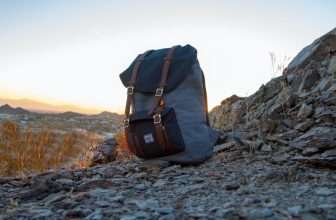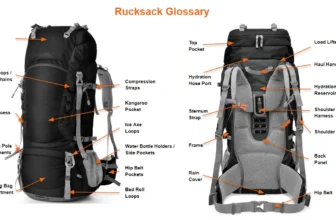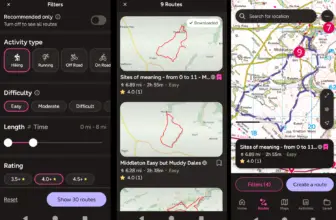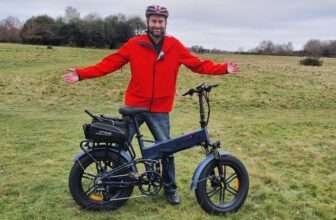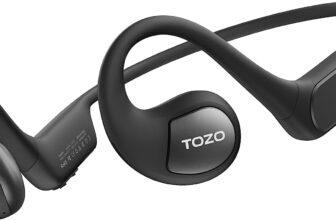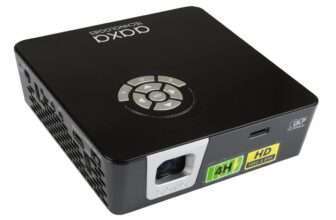The new River 2 is the baby of the EcoFlow power station range, but it still has a few tricks up its tiny sleeves. We see what it can deliver and how easy it is to use….
Check out our in-depth video review of the Bluetti EB70 power pack and PV200 solar panel below.
What we like about the EcoFlow River 2: Ergonomic design; 300W AC covers many camping requirements; Great price; Smartphone app control
What we don’t like about the EcoFlow River 2: Upside-down 3 pin plug (why??); Multiple button presses required to get power out; Cannot power anything requiring heat.
Does it always follow that ‘Big Is Better’? Well, in the world of lithium power stations, the answer is not as straightforward as you might think. The price of a power station rises almost directly proportionally with the amount of battery storage capacity on board, and as a result, it is very difficult to get a bargain price wise. If you want a high power capability and lots of storage, you’re going to have to pay for it….
It should therefore be clear that it’s extremely important to know exactly what applications you are likely to use your power station for before you purchase your power station.
You certainly don’t want to spend over £1000 for a power station with high power output and high storage, but find that you only use it to charge your phone and tablet up – that would be overkill, and a big waste of money (although you could argue that it’s never a mistake to have too much backup power!).
Conversely, you don’t want to buy a small power pack which is only capable of charging some low-power electronics, but wish that you had ‘gone bigger’ for a device that can boil a kettle or make some toast at the camp site.
This brings us neatly to the EcoFlow River 2 which is the entry-level model in their range, boasting a 300W output power inverter and 256Wh of storage capacity on board. These are not big numbers, but then again this is a relatively inexpensive product to buy, so it’s ‘horses for courses’ as we said at the outset – you get what you pay for!
We put the River 2 through it’s paces in this review, and see what it has to offer the world of camping.
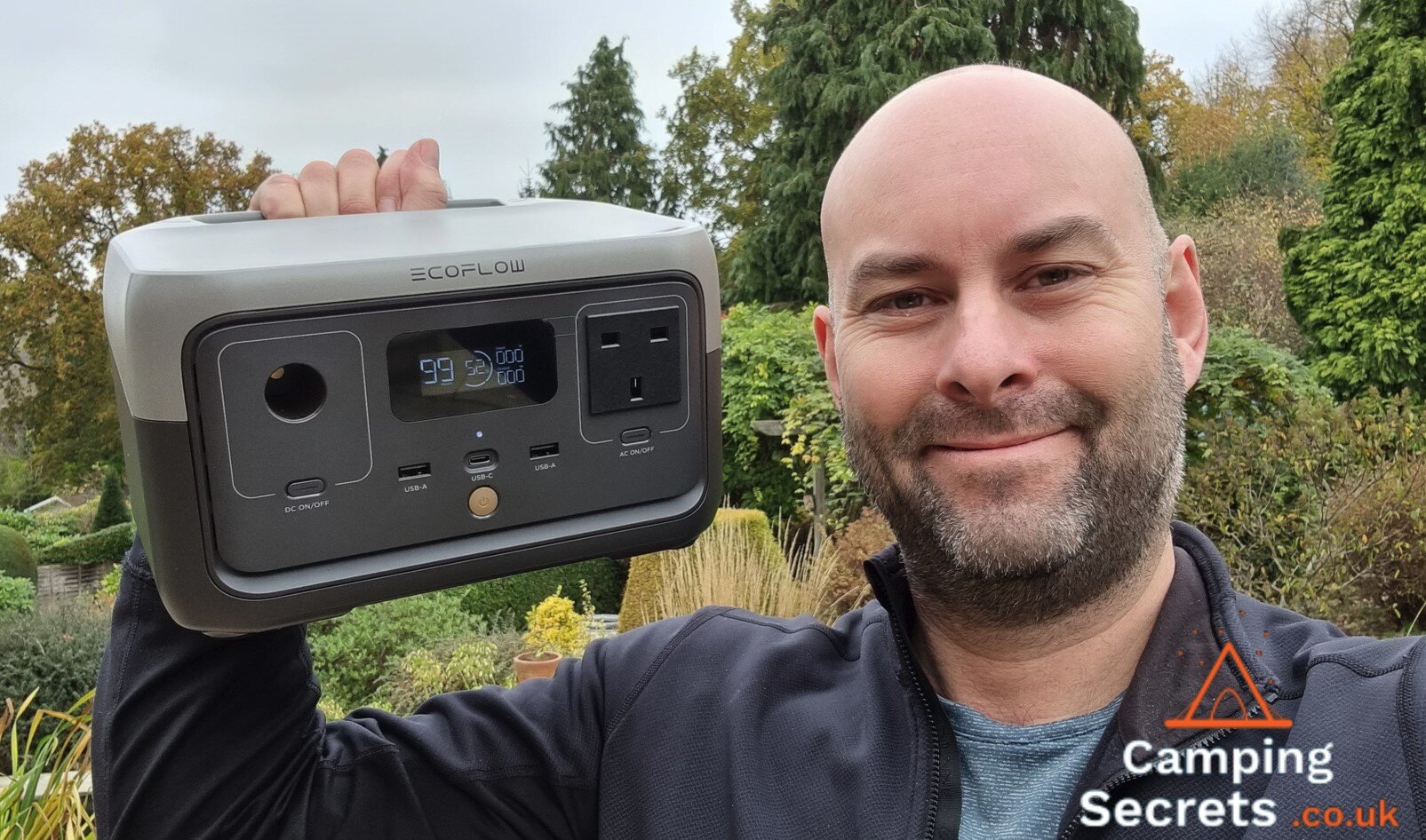
Contents
ToggleEcoFlow River 2 – What’s in the box?
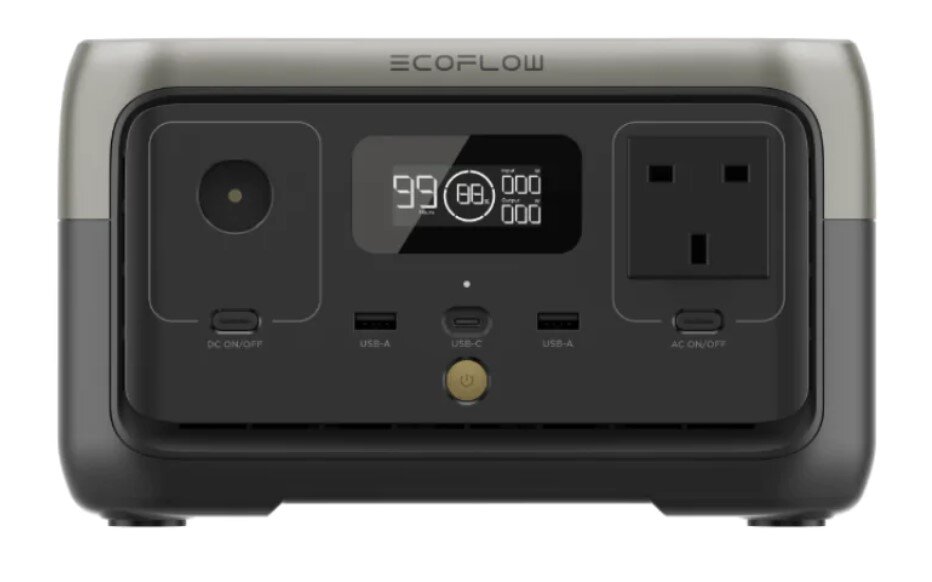 The River 2 arrived from EcoFlow wrapped in a polystyrene protective shell and within a pair of cardboard boxes. Very little chance of transport damage possible. Inside the box, you don’t actually get that much:
The River 2 arrived from EcoFlow wrapped in a polystyrene protective shell and within a pair of cardboard boxes. Very little chance of transport damage possible. Inside the box, you don’t actually get that much:
- The River 2 power station
- Basic instructions and warranty card.
- AC kettle lead for mains charging
- Cigarette lighter 12V lead for charging in a car or similar – the other end of this cable is an XT-60 connector
- That’s it!
Dimensions and Features of the River 2
So let’s get into the speeds and feeds. The River 2 is a true hand-held power station, weighing only 3.5kg and measuring a compact 24.5 x 21.4 x 14.2 cm. It’s cuboid in shape with a flat top which means you can stack multiple units on top of each other if required. Good for space saving.
 There is a rugged carry handle (non collapsible) protruding from the back of the River 2. When you lift the unit up therefore, it feels a bit like a lunch box or kettle bell with the front pointing down to the ground. Not a problem to be honest – I quite like it.
There is a rugged carry handle (non collapsible) protruding from the back of the River 2. When you lift the unit up therefore, it feels a bit like a lunch box or kettle bell with the front pointing down to the ground. Not a problem to be honest – I quite like it.
There is only one colour scheme available – dark grey for the main body of the River 2, and a lighter silver grey for the top face and edges, including the handle. It certainly looks stylish, and fits in well with the rest of the range (for example the Delta 2 – see our review here).
The side panels of the River 2 are featureless. It’s the front and rear faces where the main action happens.
Front Panel
The front has the following buttons and sockets:
- Colour LCD display – using the exact screen of the Delta 2, this is probably the best display on the market in terms of useful information. The display shows a) time left to fully charge/discharge b) existing battery % remaining c) power coming in and d) power going out.
- DC output – on the left of the front panel there is a single 12V, 10 amp cigarette socket DC output. Strangely there’s no cover for it and so it looks a little like a strange belly button – cover it up EcoFlow! Underneath the socket is a DC power isolation switch which needs to be activated to allow power to flow.
- AC output – on the front right of the River 2 is a single 3-pin AC ‘mains’ socket which can put out 220-240V at 50/60Hz, depending on what you require. Strangely it’s mounted upside down, which threw me a bit at first. Again there’s an AC power on/off isolation switch which needs to be pressed to activate the output.
- USB sockets – underneath the display in the centre of the front panel there are three USB sockets and the on-off switch for the whole device.
- 2 x USB-A sockets for normal phones and gadgets requiring 5V, 2.4 amp supply (12W maximum)
- 1 x USB-C having a maximum power outpout of 60W (3 amp, 20V). This is useful for charging modern laptops, but I would have preferred to see a 100W socket as seen on the Delta 2 for bigger laptops.
You may have noticed that to get any AC or DC power out of the River 2, you have to follow a two stage process. First, turn on the main device using the central on-off switch and then secondly turn on the DC or AC using the independent isolation switches for each. This is not the end of the world, but can feel a bit of a faff when you’re in a hurry. The reason for this is to conserve power and stop unnecessary phantom voltages from draining the battery.
Rear Panel
On the back of the River 2 is a huge fan and vent for cooling the power station. There is also a kettle plug interface for charging from the mains and a single XT-60 socket for connecting a solar panel or 12V input power for charging from a cigarette lighter via the supplied cable.
River 2 – Key Selling Point #1
A mega selling point of the EcoFlow River 2 over other similar-sized or even larger power stations like the Bluetti EB70 or the Jackery Explorer 500 is that the River 2 only requires a single kettle lead to be plugged directly in from the mains to enable charging. The power packs from the main competitors all have external power supplies, a bit like computer laptops do – we call them power bricks. These bricks take up extra space, and some even have their own fans which can make some serious noise. A definite advantage of the River 2 in our opinion.

Storage and Power Delivery
Battery Technology in the River 2
The River 2 is an updated version of the original EcoFlow River, and the main change is the adoption of Lithium Iron Phosphate (LiFePO4) cells as the battery technology.
This is one of hottest debates in power station tech at the time of writing, with EcoFlow and Bluetti switching to LiFePO4 and Jackery staying on conventional lithium-ion.
Both technologies have their fan base, with traditional lithium-ion (NMC) having better energy density and efficiency than LiFePO4. However not by much. In contrast, LiFePO4 is safer and can withstand many more charge/discharge cycles. About 6x as many (3000 vs 500) before the storage capacity has dropped to 80% of the starting amount. If you’re fully discharging charging the River 2 every single day for 8 years, it will still have 80% capacity available to you. Pretty reassuring in our opinion.
Battery Capacity of the River 2
The River 2 has 256Wh of capacity on board which is not a whole lot, especially when you take efficiency into account. The LiFePO4 batteries and inverter are around 85% (at best) efficient and so in actual fact you are getting 256*0.85 = 218Wh of useable capacity from the power pack.
This will run a 50W thermoelectric cool box for around 4 hours which is good enough for a picnic – the River 2 is certainly small enough to pop in a day backpack and bring along for a picnic by a river too (river 2 – geddit?). I’ll try and lay off the jokes from here.
Inverter
The inverter on board has a 300W nominal capability, and the ability to surge at up to twice that (600W). Surging means using more power on a very short term basis of a few seconds. This is to turn on devices which require a high peak power at startup.
However, whilst these numbers are decent, with only 218Wh of usable power on board, running at 300W is just not going to happen for long periods of time – maybe 40 minutes at best, before the River 2 is flat.
River 2 Charging Speed – Key Selling Point #2
USB-C charging
In Operation – How Useful is the River 2?
OK, we’ve spent alot of time with the River 2 – is it a useful device? The answer is yes, as long as you’re aware of how little power you have on board.
If you don’t have a large budget OR if you think you will only be charging your phone, tablet or laptop multiple times over say a weekend of camping then the River 2 will be perfect for you.
It definitely enables day trips away, either for picnics (cool box), powering lights, or (my personal fave) powering a mobile office. You can take your campervan away for the day and easily run a pre-charged 45W laptop for 6-7 hours. Very nice.
Where the standard River 2 is less good is when you want to run higher power appliances for longer periods of time. In those cases, you may choose to look at the higher power variants – the River 2 Max (512Wh / 500W) or the River 2 Pro (768Wh / 800W). If these still don’t have enough power then you will need to switch to the Delta 2 range. We prefer the higher power Delta 2 for our campervan, but it is obviously more expensive.
Can you Use the River 2 While it’s charging?
Yes, the River 2 does allow power to be drawn out of it whilst it’s charging. This means it can be used as a quasi ‘uninterrupted power supply‘ or UPS.
What does this mean? If your house or caravan is running on mains electricity, you can use larger EcoFlow devices like the Delta 2 attached to the mains distribution board via a switch – when the mains drops out, the switch will automatically move you onto battery power.
With the River 2 this can be done in a similar way by simply leaving it permanently charging on the mains with an appliance (e.g. your fridge freezer) being powered via the AC output of the River 2. In the event of a power cut, the River 2 will switch to battery power in less than 30ms – this is very quick and means that even a computer may be able to continue working while the River 2 switches. We have not yet tried this out though and will update the article when it’s been tested.
See the video below which shows us testing a mains lamp as the power is cut and the River 2 switches to battery output power only. There is barely a flicker of the light.
EcoFlow App

 Smartphone apps can be a bit annoying – who wants to be firing up their phone when you just need some power out of your River 2?
Smartphone apps can be a bit annoying – who wants to be firing up their phone when you just need some power out of your River 2?
However the EcoFlow app is great for adjusting all sorts of parameters on your device which you can’t access via the main front panel. On top of seeing all the usual input/output powers and capacity, it allows charging rate and thresholds to be set to your own requirements.
The app really comes into its own when you have several EcoFlow devices and you need to control them all. This can even be done remotely when you’re in another part of the world, because the app can work either via Wi-Fi (on your home network) or via Bluetooth if you’re out in the wild. The River 2 works with both – we’ve verified it.
Summary and Conclusions
So what’s our verdict on the EcoFlow River 2 power station? Well, if you’re looking for a small power station which can help tide you over on a camping trip to keep your gadgets charged, or you need a few hours blast on a cool box for a picnic then this is the one for you.
It has excellent charge speed compared with the competition (around 5x faster on mains input), a great display which accurately shows time remaining and percentage capacity remaining. We like the USB-C charging as well as the general ergonomics such as the colour and carry handle.
Bear in mind that you won’t get the headline storage of 256Wh, but this is the same with all power stations – the manufacturers like to quote headline numbers which are unattainable in the real world (same goes for electric car manufacturers!).
Our only other niggles are the upside down AC plug and the lack of a cover for the 12V output – however this latter niggle could be seen as a positive which can save time plugging in. I just don’t like the look of that big hole in the front face of the River 2.
Overall, it’s a good, solid purchase – just be sure that you don’t need more oomph from your power station. We certainly do which is why we prefer the EcoFlow Delta 2.
Giving a score to the EcoFlow River 2 is very tricky. If you're only comparing it to similarly powered devices then it scores a 9.5/10 all day long - it's that good. However, as a general power pack for all round use then I think it's under powered in terms of both storage capacity and inverter output. We would look at the Delta 2 in that case, but it's almost 4x the price! Definitely buy the River 2 if you don't need too much out of your camping power pack.
